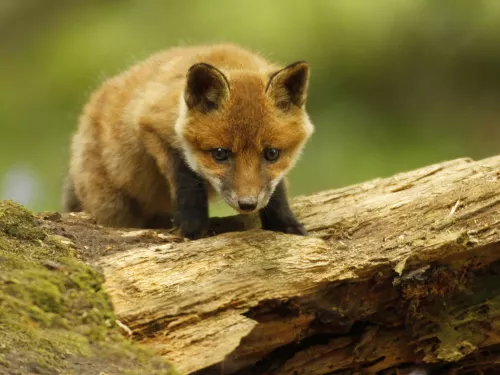Raven
The raven is famous for being the imposing, all-black bird that guards the Tower of London. Wild birds live in forests, and upland and coastal areas in the north and west of the UK.
The raven is famous for being the imposing, all-black bird that guards the Tower of London. Wild birds live in forests, and upland and coastal areas in the north and west of the UK.
Their long narrow shells are a common sight on our shores, especially after storms, but the animals themselves live buried in the sand.
The razorbill has a characteristically thick, black bill, with a white stripe across it. It nests with other seabirds, such as guillemots, but prefers the lower ledges and rocky bottoms of cliffs and deep ravines.
The red admiral is an unmistakable garden visitor. This black-and-red beauty may be seen feeding on flowers on warm days all year-round. Adults are mostly migrants, but some do hibernate here.
Turn over large stones or paving slabs in the garden and you are likely to find a Red ant colony. This medium-sized ant can deliver a painful sting, so be careful! In summer, winged adults swarm and mate.
As its name suggests, Red bartsia does have a red tinge to its stem, leaves and small flowers. Look for it on roadside verges, railway cuttings and waste ground in summer.
Just as the bluebells finish flowering in our woodlands, the rose-red blooms of red campion start to brighten up the woodland floor. Look for this pretty plant in hedges and roadsides, too.
A familiar 'weed' of gardens, roadsides, meadows and parks, red clover has trefoil leaves and red, rounded flower heads. It is often used as fodder for livestock.
Despite the family it's from, red dead-nettle does not sting. It displays dense clusters of pinky-red flowers in whorls around its stem, and can be found on disturbed ground, such as roadside verges.

Standing proud and tall, the red deer is our largest deer. With its massive antlers, it is an unmistakeable icon of the Scottish Highlands, but can be seen in northwest and southern England, too.

Famed for their cunning and stealth, these orangey-red dogs with their bushy tails can be seen in towns and the countryside. They come out mostly at night but can also be seen during the day if you’re lucky!
This brightly coloured and easily recognizable fish is one of three gurnard species found in UK seas. Collectively, gurnards are known as sea robins.